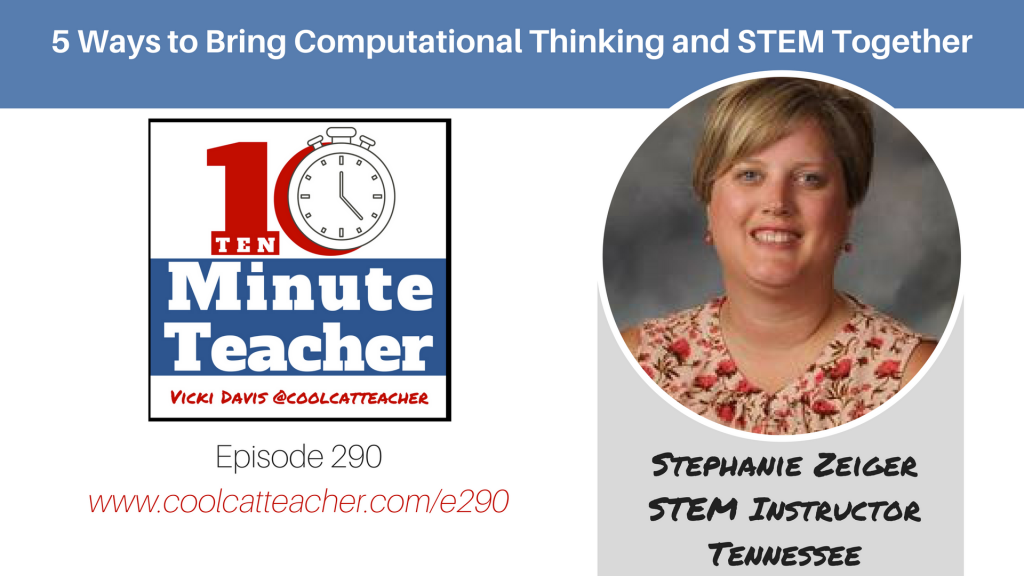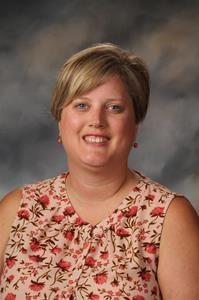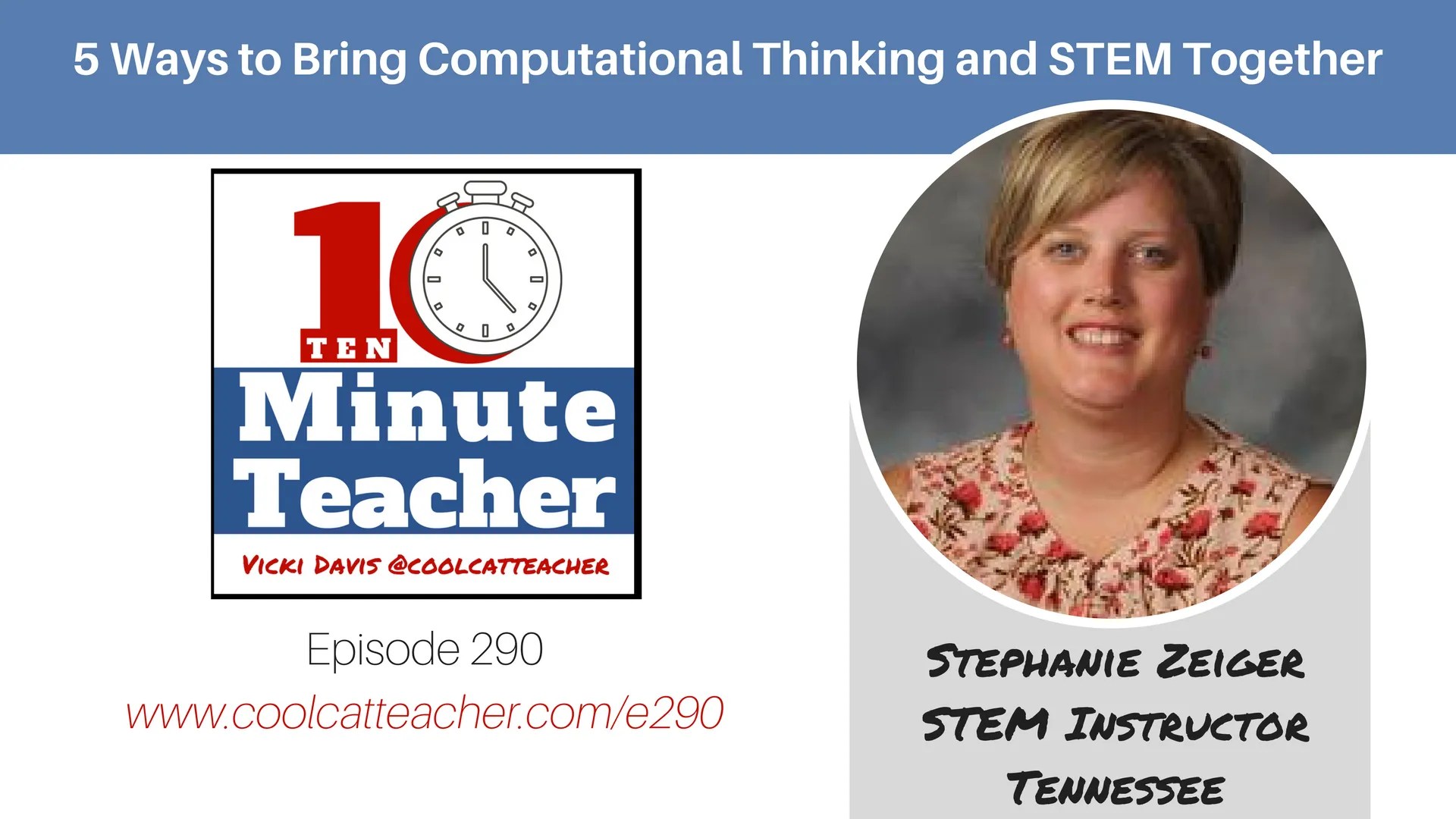[ad_1]
STEM and Computational Contemplating go collectively. As we converse’s customer is a PhD, Biomedical engineer and STEM Coach. Stephanie Zeiger helps us see the potential of STEM and computational pondering.

Hear Now
***
Hyperlink to level out: https://www.coolcatteacher.com/e290
Date: April 13, 2018
Vicki: Let’s talk about bringing computational pondering and STEM together with Stephanie Zieger. She works with science and coding at a school in Nashville, Tennessee.
So, Stephanie, what’s our first resolution to hold computational pondering and STEM collectively?
Stephanie: Properly, first, thanks for having me in your current. I was very excited to get contacted by you to talk about this because of I’m super passionate about it.
The very very first thing I want to say is that as lecturers, you should know that STEM and computational pondering won’t be distinctive. In precise truth, the best way during which scientists and engineers technique points is much like how a computer scientist thinks.
Scientists and engineers technique points like programmers do
So, for example, after we take a look on the engineering design course of… First, you’re going to find out points, you’ll do the evaluation and know what your constraints and requirements are, and that’s going to be one factor you do whether or not or not you’re designing an airplane or an app. You might have to be taught some concepts to understand the problem greater, nevertheless it’s very comparable.
Decide points and do evaluation
When you go and likewise you consider and brainstorm to consider these choices, you might need to interrupt down the problem into further manageable elements sooner than you consider recommendations on easy methods to even treatment it. That’s actually referred to as decomposition in computational pondering.
Decompose the problem sooner than brainstorming
Subsequent, you get to plan. Just like an engineer or a scientist, you’re planning out your experiments or designs, you’re going to design an algorithm when you end up programming. That’s a step-by-step resolution to treatment the problem.
Design the algorithm or create your plan
Then closing, after we get into the create, examine, and we redesign You get to examine your design and be taught what’s working, what widespread concept you found and what have to be modified. To revamp, you should seek for these patterns, analyze the data, and work out what’s answerable for the result. That’s comparable pattern recognition and abstraction computational pondering.
Create and examine and analyze outcomes
Lastly, my favorite issue is when you’re coding, and likewise you run that program and it doesn’t work, and you should debug, you’re actually have to be learning from failure. Everyone knows as science lecturers, that’s positively one factor you’re doing throughout the science and engineering space.
Debug and modify
Vicki: Wow. So have we already gone by way of all 5 now? (laughs)
Stephanie: (laughs) We haven’t!
Vicki: (laughs) OK, so we’ve gone by way of 4. So let’s once more up a second.
So to start with, you said, STEM and computational pondering won’t be distinctive. So some people assume, “OK, now we’re going to do science. Now we’re going to do engineering, Now we’re going to do math. After which we’re going to do coding.” So that you simply assume all of them can kind of come collectively, correct?
Stephanie: Correct. Undoubtedly. I consider with the exact mission design, you presumably can actually incorporate all of these collectively.
We’ve had some experience with that, and what we’ve found is that it tends to get the students further passionate about what they’re doing throughout the science class. It moreover really helps them actually really feel like they may change the world in relation to using STEM and pc programs.
Vicki: OK, so give me one occasion of bringing these collectively, Stephanie.
An occasion of computational pondering and STEM collectively
Stephanie: So, in a single event, one amongst my favorite duties we do has to do with {an electrical} vitality unit in our seventh grade. We ask faculty college students to develop an interactive toy. They’re “employed” (laughs) by Mattel — which is just to get them excited — to design an interactive toy.
So faculty college students work as mechanical and electrical engineers to check circuits, like sequence and parallel, current and voltage. Then they design a toy that’s going to incorporate a push button, an LED, or a motor.
What we found was that our faculty college students have been like, “Oh yay! My button works! And the LED works!” Nevertheless they really want a further interactive toy that does considerably bit larger than delicate up or spin. So we took the mission to the next diploma and added in what’s referred to as bodily computing.
Now our faculty college students are using Arduinos to actually delicate LEDs in patterns, spin a motor to a positive diploma that they want so that they get further administration over their toy, or actually merely even play a tune by altering the frequency of sound waves using a buzzer.
So the enjoyment of this mission merely grew exponentially. Our faculty college students are far more excited as soon as they lastly get by way of that making an attempt points out and finally get a working toy that comes with Arduino.
Vicki: That’s unbelievable. And what age are the kids?
Stephanie: This was in a seventh grade class.
Vicki: Great. OK, so that you simply’ve given us an occasion of how STEM and computational pondering come collectively. That’s a implausible occasion. It’s obvious that the kids should do amount two, which is planning points out.
Then amount three, which is testing and learning and figuring out recommendations on easy methods to modify.
Let’s park for a second on amount 4. Now this is a frustration that I see various lecturers — or I assume a misstep — that various us make. I did it at first, too. We actually really feel like we have failed as a teacher if it doesn’t work the first time. Do you agree or not?
Stephanie: I do not agree. Are you talking about if the student’s mission doesn’t work the first time?
Vicki: I’m saying that sometimes lecturers are inclined to to actually really feel like a failure if the student mission doesn’t work the first time, nevertheless that’s most likely not how we should all the time actually really feel, is it?
Stephanie: No. Undoubtedly not. Having been a scientist and an engineer in my earlier life sooner than educating (laughs) I’ve to say that there’s further failure than success in these fields.
What you want is for pupil to be like, “OK. That didn’t work, so let’s see what went fallacious. Let’s step once more and work by way of it, and see how I can redesign and assemble a worthwhile prototype.”
We really want to push the tactic, not the product. We want — even on the end of the mission — we want the students to basically mirror on the place they started and the place they ended up. They’re going to see the place they’ve grown of their learning.
As a teacher, we don’t want it to work out utterly, because of that’s no pleasurable. The pleasurable half is after we actually educate our faculty college students recommendations on easy methods to persevere and draw back treatment when points don’t work.
It’s no pleasurable if it actually works out utterly the first time
That’s the place debugging is accessible in with computational pondering, and the place in science and engineering it’s solely a pure part of these kinds of jobs.
Vicki: Properly, and I’ve seen lecturers who’ve completed points like, “OK, design a establishing, and I’m going to set off an earthquake to happen. See ought to you may keep it from falling down.” Or putting some stress on it, so it’s an exact rivals for it, I assume, to hold up indirectly.
Stephanie: Correct. We do a bridge mission with a number of of our faculty college students in our classroom. We intentionally make the bridge fail. We positioned on as quite a bit as we are going to until it breaks. The rationale we try this’s we want them to return and redesign and work out how they may improve it. That’s an important part of the tactic.
I would encourage lecturers to hunt out strategies for faculty college students to have duties that aren’t always going to work out utterly, after which help model to them how they draw back treatment and work by way of that. School college students are inclined to imagine failure is a foul phrase. In my line of labor, I actually assume it’s an unbelievable phrase. (laughs)
Vicki: So is that our fifth, to help model recommendations on easy methods to draw back treatment, or is it one factor else?
Stephanie: Properly, I had some further, nevertheless… (laughs)
Vicki: OK! Give us some further!
Stephanie: (laughs) Alright!
I did want to degree out that part of when you end up modeling… so let’s merely model… I always give an occasion for computational pondering. When faculty college students can perceive how quite a bit STEM goes into computer know-how or animation or video video games, they may use programming to design their very personal animation of a STEM concept, akin to recommendations on easy methods to get to a rocket’s velocity or angle of projection right so that it might really make it to the moon.
There are sources like code.org, CS Discovery’s curriculum, or MIT’s Scratch program which may be really useful for lecturers to create a mission that allows the students to express their creativity whereas using programming and modeling to deepen their understanding of the scientific concept.
We’ve utilized this all through quite a few duties, along with one which’s been completed in our historic previous classes, the place the students actually wrote code to model Greek mythology (laughs) as they’ve been learning regarding the gods and goddesses.
Vicki: Superior. So we’ve talked about various strategies to hold computational pondering and STEM collectively.
Stephanie, let’s find yourself with a quick 30-second pitch on why these two points belong collectively. Why do computational pondering and STEM belong collectively?
Stephanie: So computational pondering and STEM belong collectively because of they’re really going to counterpoint each other in serving to your faculty college students grow to be further STEM educated. I want to encourage lecturers that while you may see the benefits of computational pondering, it’s possible you’ll be overwhelmed to know even the place to begin out.
So attain out to the Laptop Science Lecturers Affiliation. Membership is free! They’ve good sources. Merely bounce in. Step out of your comfort zone. Be the student, and easily try and program. You’ll be amazed at how quite a bit you develop in your learning, and the model new perspective you’ll have about your faculty college students as they’re learning STEM concepts.
Step out of your comfort zone
Vicki: I utterly agree, because of I do know as soon as I first helped kids make video video video games in Scratch, it scared me. I do know as soon as I first helped kids make apps, it scared me. As soon as we first acquired Arduinos, it scared me.
Stephanie: (laughs)
Vicki: It’s kind of scary and nerve-wracking, nevertheless these are points you’ll be able to do. So get out and try and experiment and be a creator alongside alongside together with your faculty college students.
Stephanie: Certain. I absolutely agree with that.
Contact us regarding the current: https://www.coolcatteacher.com/contact/
Transcribed by Kymberli Mulford kymberlimulford@gmail.com
Bio as submitted

Stephanie Zeiger is an engineer and scientist that has embraced bringing the world of STEM to school college students of all ages. She has undergraduate ranges in nuclear engineering and a PhD in biomedical engineering the place she first found to code. As a evaluation assistant professor at Vanderbilt School, she turned involved in numerous STEM tutorial outreach packages and positioned a passion for educating science. As we converse, she is an instructor with the Vanderbilt Packages for Proficient Youth and a Harpeth Hall School science teacher the place she teaches and develops STEM curriculum along with quite a few coding classes that emphasize computational pondering.
| Disclosure of Supplies Connection: It’s a “sponsored podcast episode.” The company who sponsored it compensated me by means of cash value, current, or one factor else of price to include a reference to their product. Regardless, I solely counsel companies or merchandise I think about shall be good for my readers and are from firms I can counsel. I am disclosing this in accordance with the Federal Commerce Price’s 16 CFR, Part 255: “Guides Regarding the Use of Endorsements and Testimonials in Selling.” This agency has no impression on the editorial content material materials of the current. |
In no way Miss a Podcast Episode
Subscribe to get our podcast episodes by e-mail.
[ad_2]
Source link
